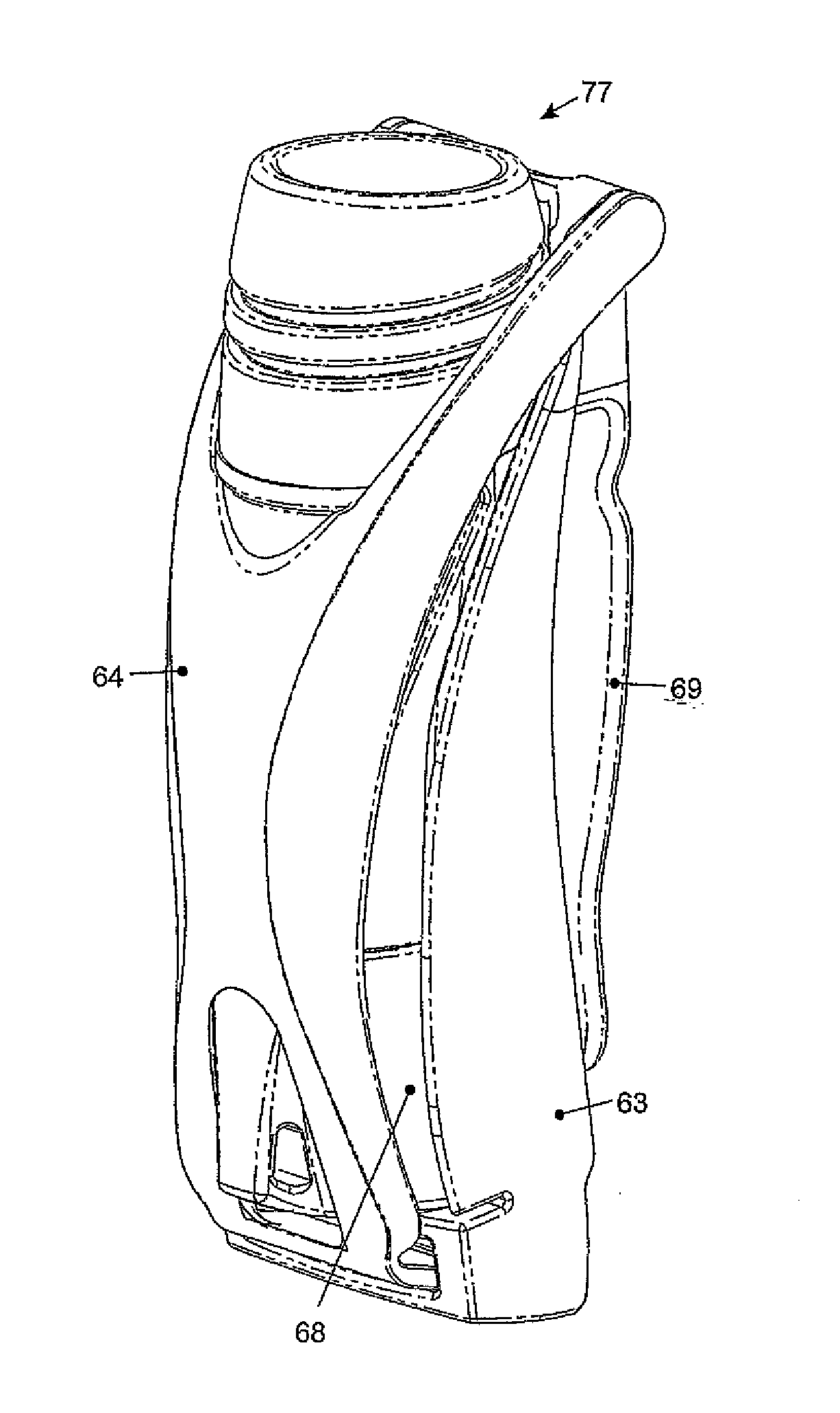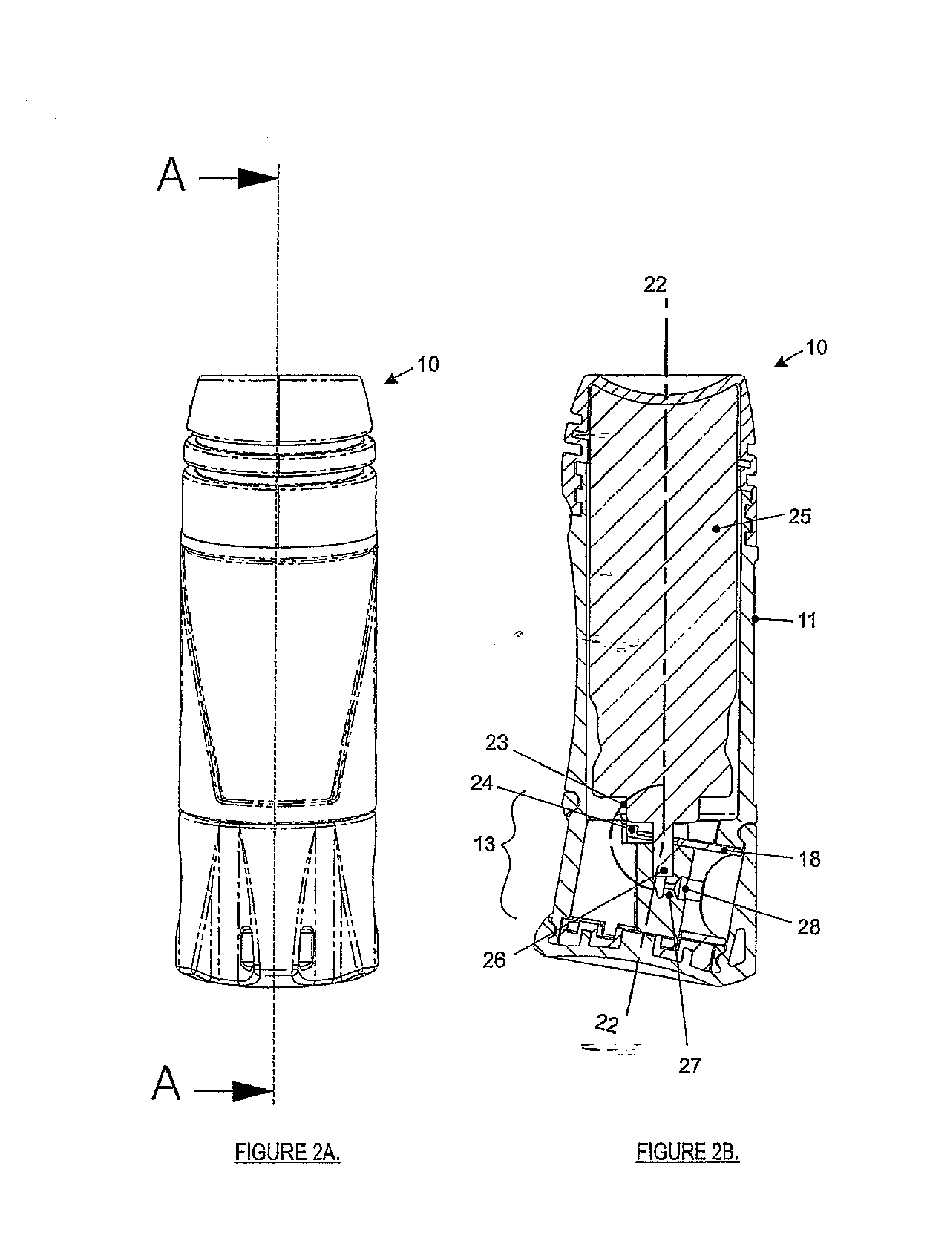These drugs, which included
aminophylline and adrenaline, had reasonable levels of
efficacy but also brought with them some significant risks in use.
Further, the use of these drugs was only ameliorating and usually did not provide any ongoing
advantage to a patient in the way of control and stabilisation of the
disease condition.
However, the side effects of prolonged oral or parenteral administration of corticosteroids in people are notorious and necessitate restrictions on the adoption of this approach in other than the most severe cases.
While these developments have been of tremendous benefit to sufferers of diseases that lend themselves to effective self-medication, there has been an ongoing problem of patients either forgetting their medication canisters or mistakenly believing they are stored somewhere, such as a handbag or sports bag, only to find the medication is not available for use when required.
The problem of effectively and safely storing medication canisters is exaggerated in sporting activities where clothes are often designed for the specific requirements of the sport being undertaken, but with no provision of secure pockets or pouches.
Even when pockets are present, a medication dispenser carrier may be susceptible to damage through
impact or introduction of contaminants.
The problems may be pronounced in outdoor activities, such as snorkelling,
scuba diving,
orienteering and
mountaineering where a sufferer of a condition may find themselves a considerable distance from a support base with little else other than gear required for the activity.
Use in harsh environments or inclement conditions, such as rain and
snow, may lead to ingress of
moisture and other contaminants, such as mud, dust, sand,
vegetable matter or other materials that may damage a medication device or present a risk to the user.
The application of the device is therefore somewhat limited particularly in inclement environments, such as are often encountered during sporting activities, particularly waterborne sports and endurance type activities.
The device is relatively complex, although it does include a storage section for holding an extra medicament
capsule.
It appears to be relatively bulky and complex in operation which increases the tendency for malfunction in the presence of
foreign matter.
Further, a person in shock or
respiratory distress may be unable to provide the necessary inspiratory effort to activate it.
This, however, requires removal of the device from the body for its function.
When housed in the durable body, the operation of the device is relatively complex.
The device is not environmentally sealed.
It appears relatively complex and is predominantly electronic.
The device is relatively complex, having a housing and a tray with a support disk provided on the tray and adapted to receive a carrier which, in turn, carries the medication.
The device does not appear to be environmentally sealed against
moisture in particular.
Further, in both embodiments, it is a relatively complex device and is restricted to use of
powder.
The device is therefore a complex electronic arrangement and relies on
electric power in use.
It may have limited application in harsh environments.
While the described arrangement seeks to provide a hygienic arrangement for storage of a metered-
dose inhaler, it has a number of problems.
The first problem arises from the fact that the
mouthpiece moves perpendicularly to a
long axis of the tubular body when moving to its extracted position.
Due to the right angular arrangement described in the present device, this will inevitably lead to tilting of the mouthpiece when it is placed in appropriate proximity to the user's lips so that the direction of the dispensed
flume of medication is towards the roof of the user's mouth thereby
coating the mucous membranes with the medication rather than entraining it in the inhaled breath.
A further problem arising from the embodiment of FIGS. 5 to 8 of Somova is that the extraction of the mouthpiece relies on the camming means first acting on a rear portion of the mouthpiece followed by completion by the action of the adjacent side edge of the opening 11.
A further problem may arise in that retraction of the mouthpiece is reliant on movement of the rotatable cap causing the edge to slide across the curved mouthpiece to thereby overcome the deploying force.
The described embodiments will be highly prone to erratic operation, particularly in retraction, and will require a hard cap which is less able to adequately seal the present arrangement.
A further deficiency arises from the fact that there is considerable clear space between a bottom edge of the mouthpiece and the top of the MDI adjacent the protruding stem of the valve.
Further, because of the present arrangement, there is a considerable space between a rear edge of the
mouth piece and the outlet of the MDI
discharge valve.
This creates a risk of unintended distribution of the spray on the inner walls of the device rather than delivery to the user.
This may cause more operational problems Given the range of rotation of the mouthpiece, if it is not fully deployed, operation of the
aerosol container will cause distribution onto a wall of the mouthpiece.
As noted, in inclement circumstances, the risk of
contamination may be significant.
Use of therapeutics in
emergency situations may present different risks which can be highly serious.
 Login to View More
Login to View More  Login to View More
Login to View More 


